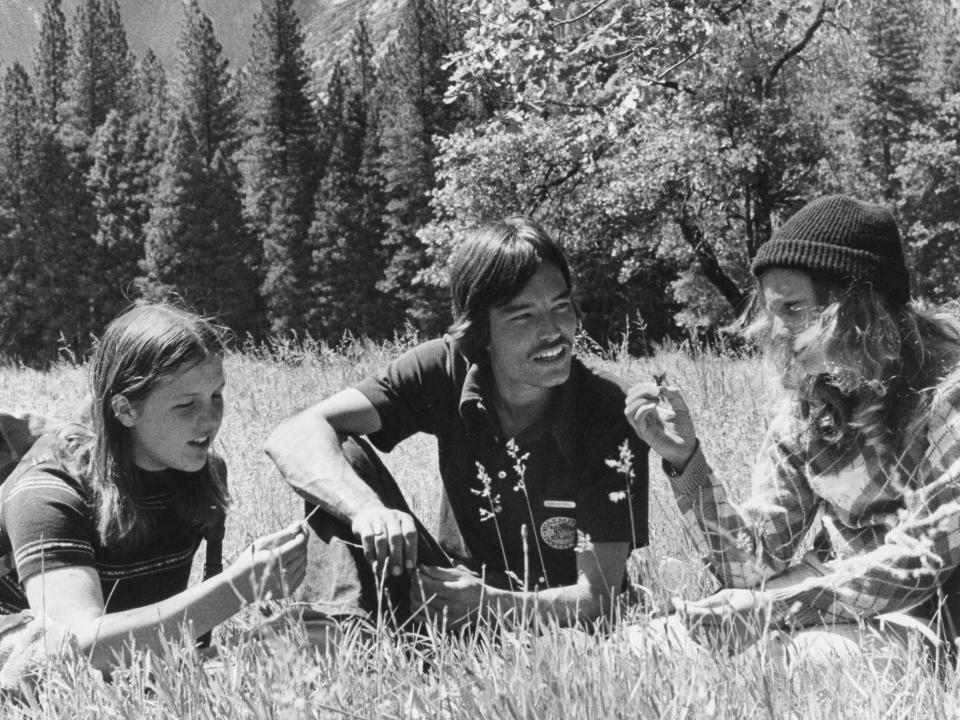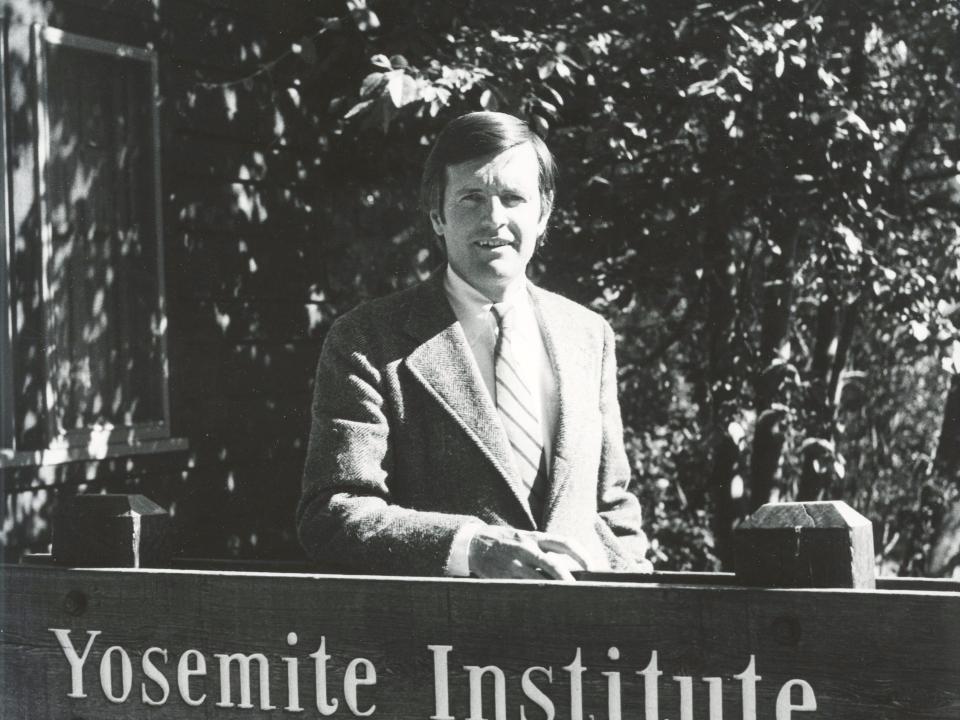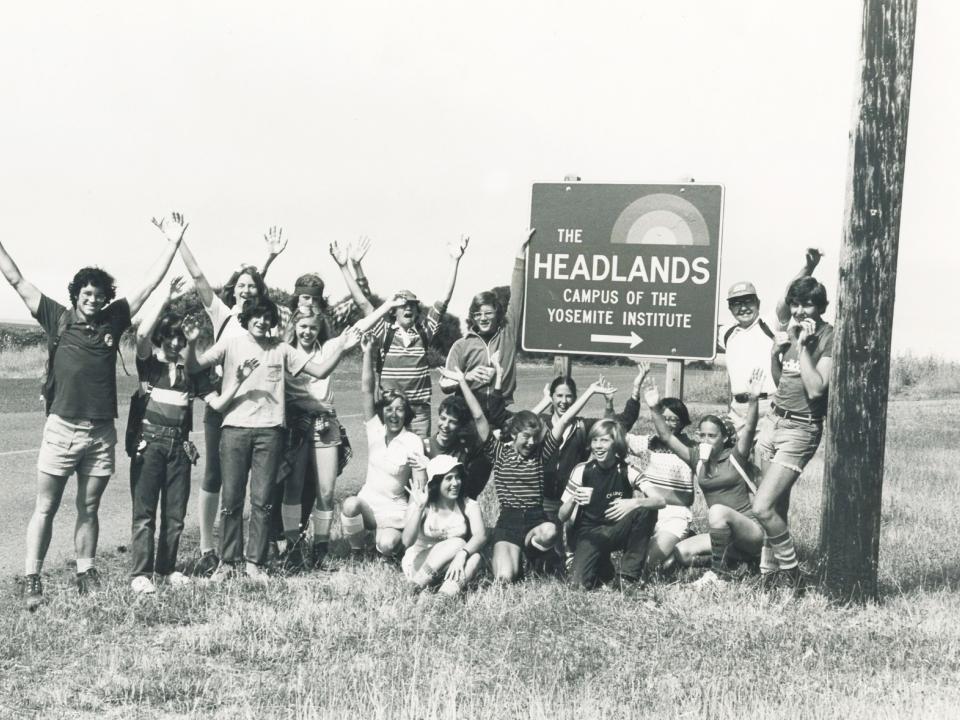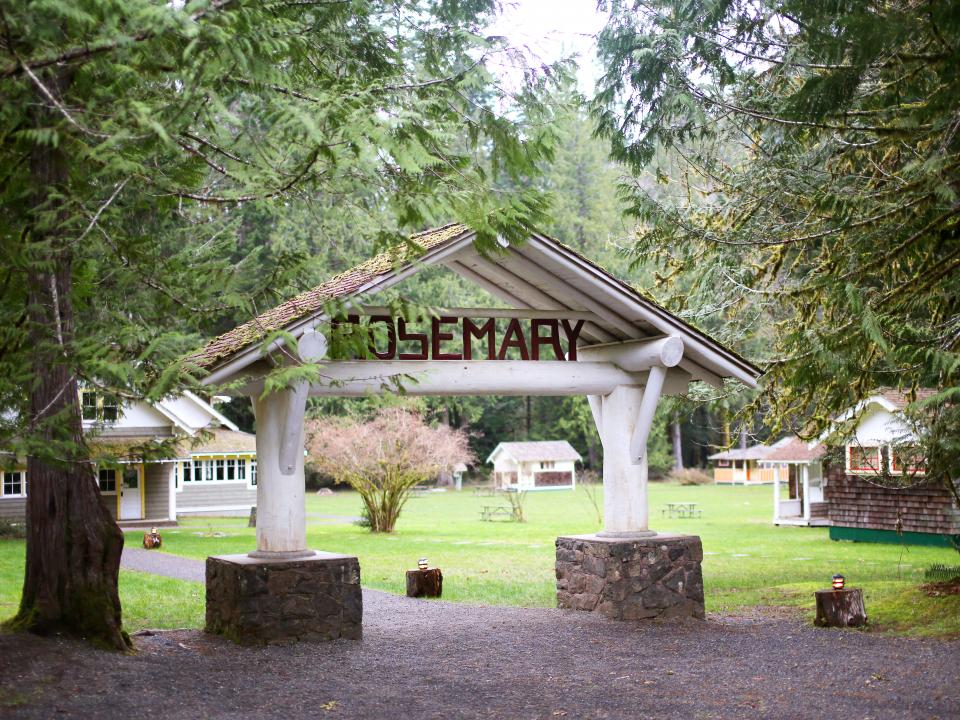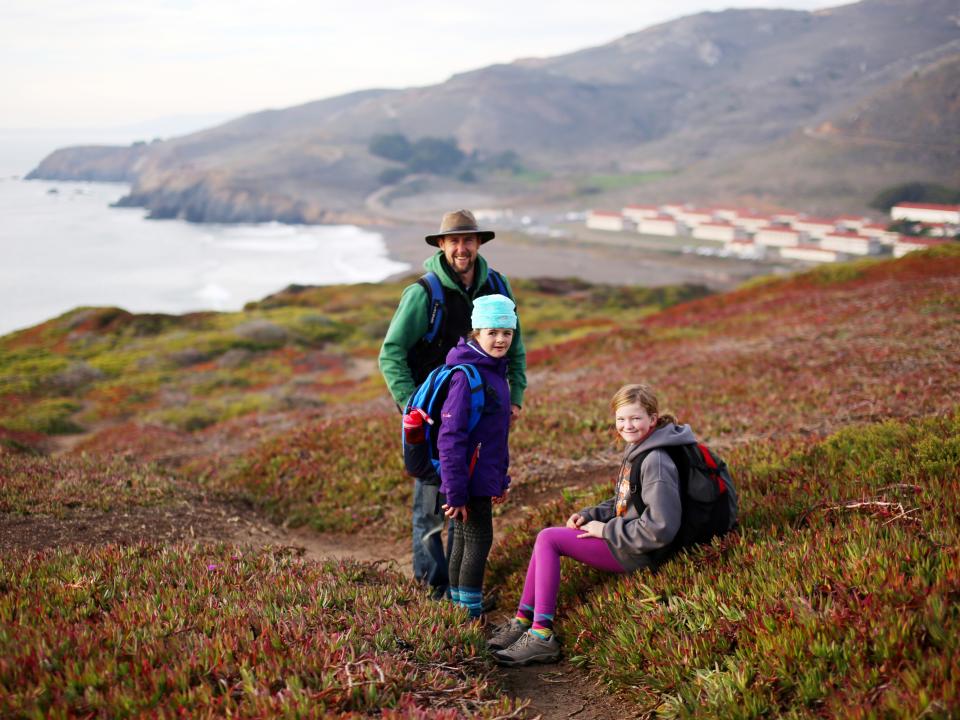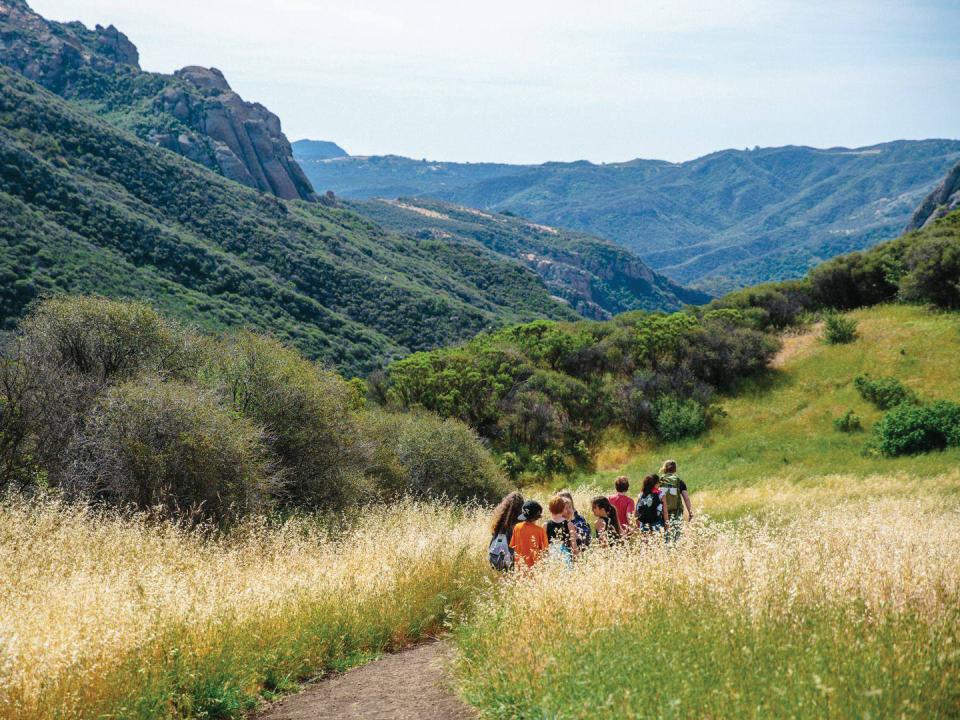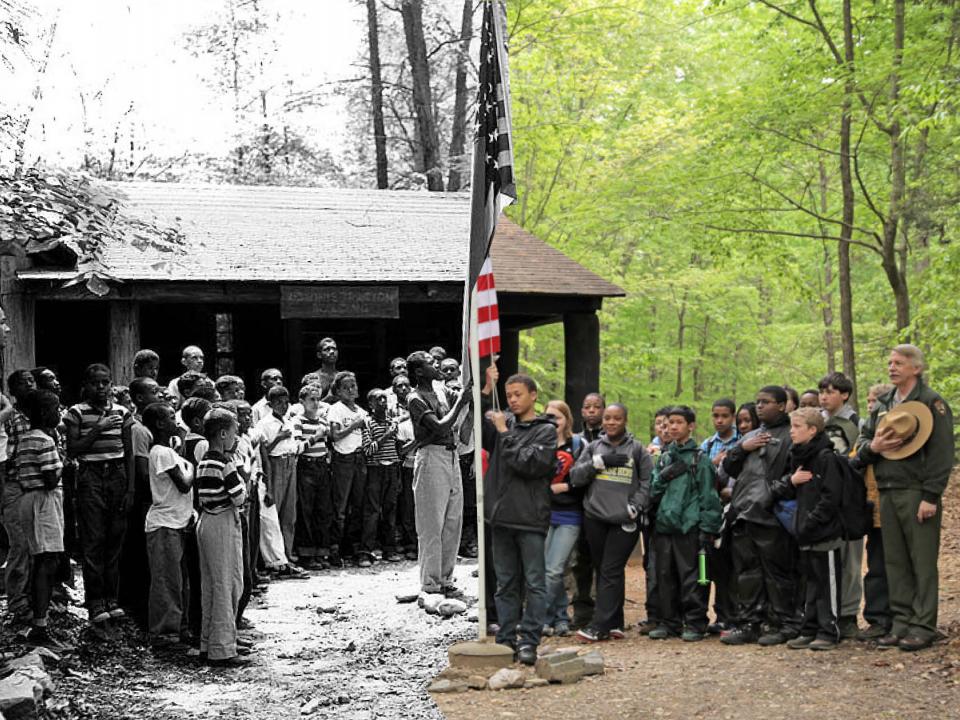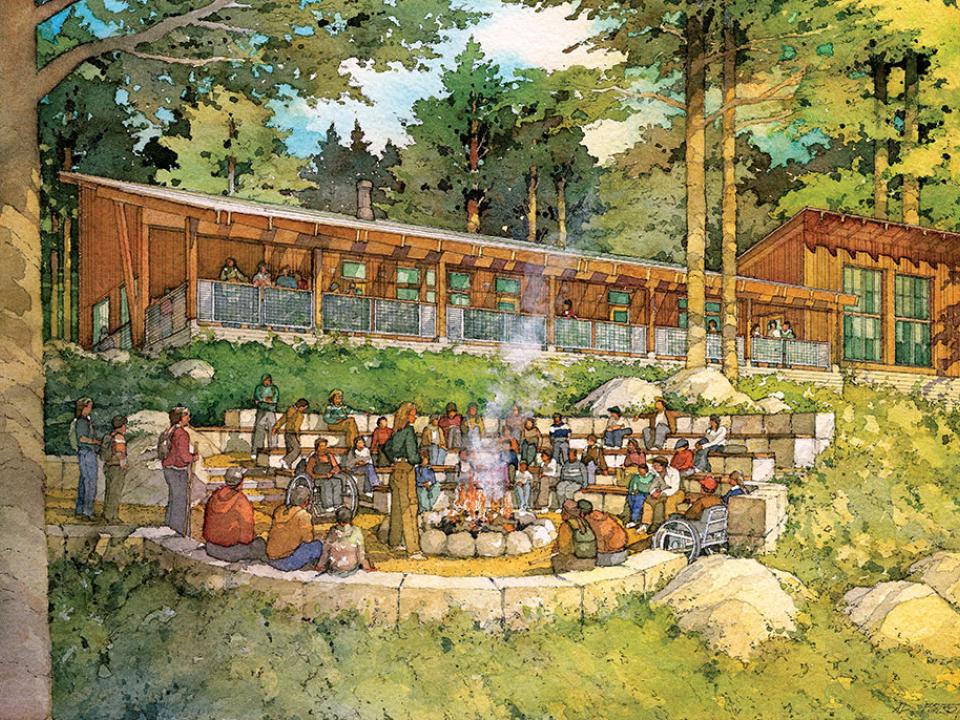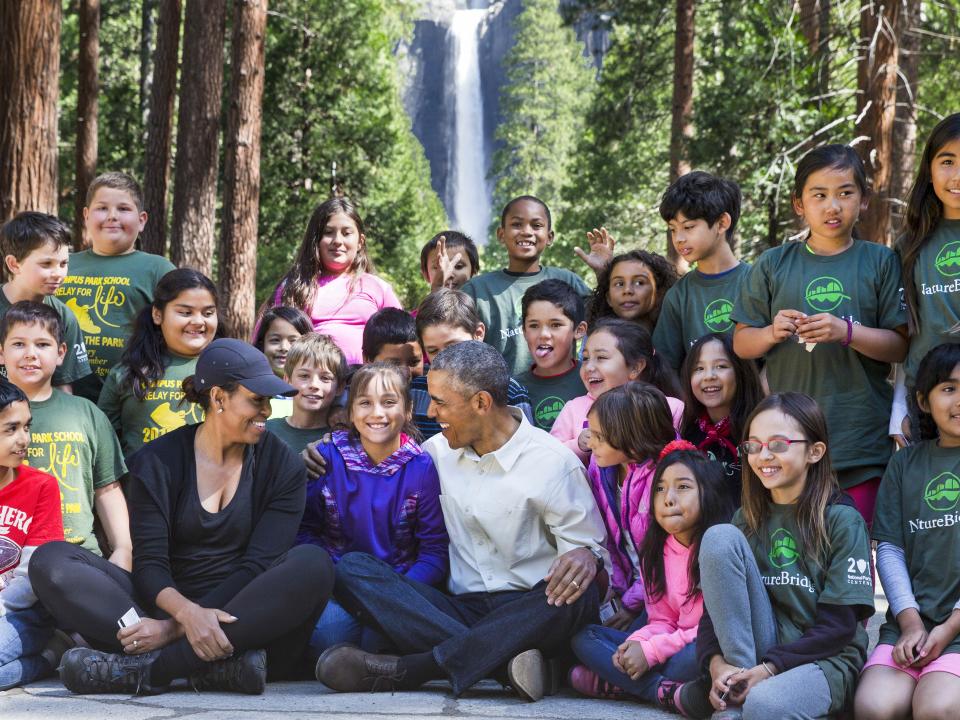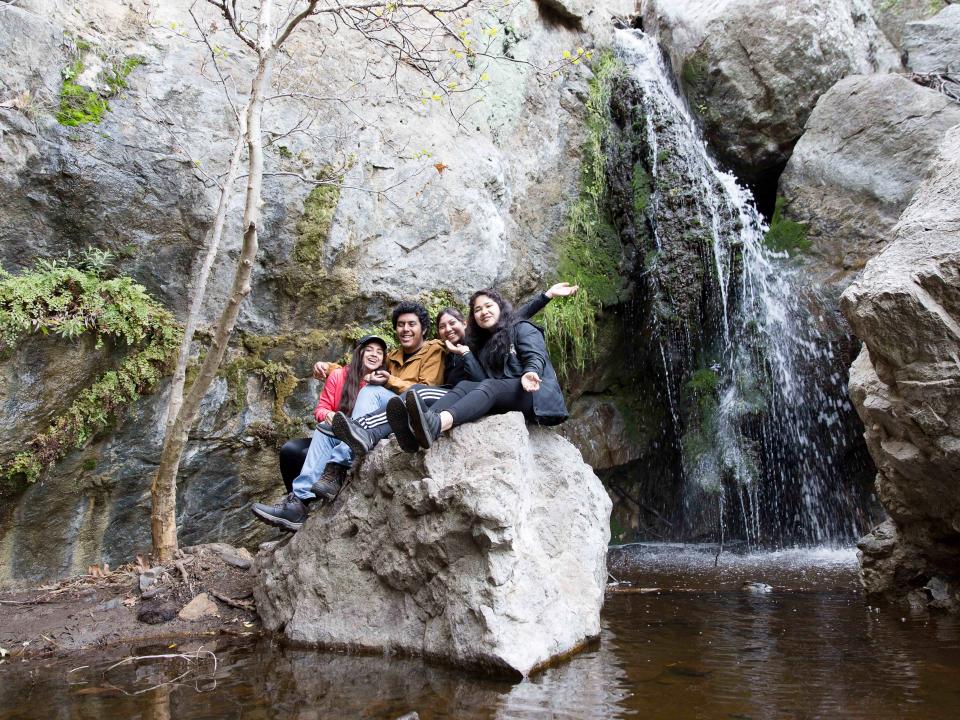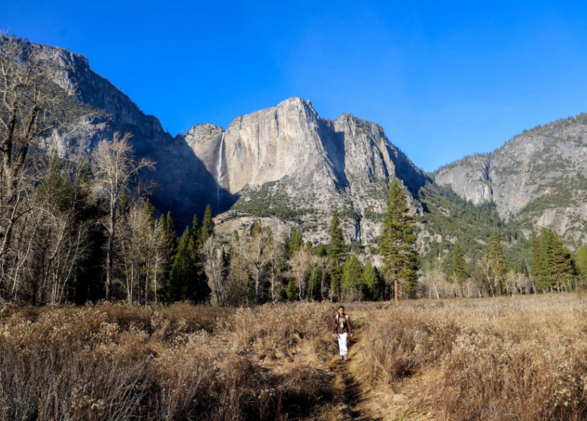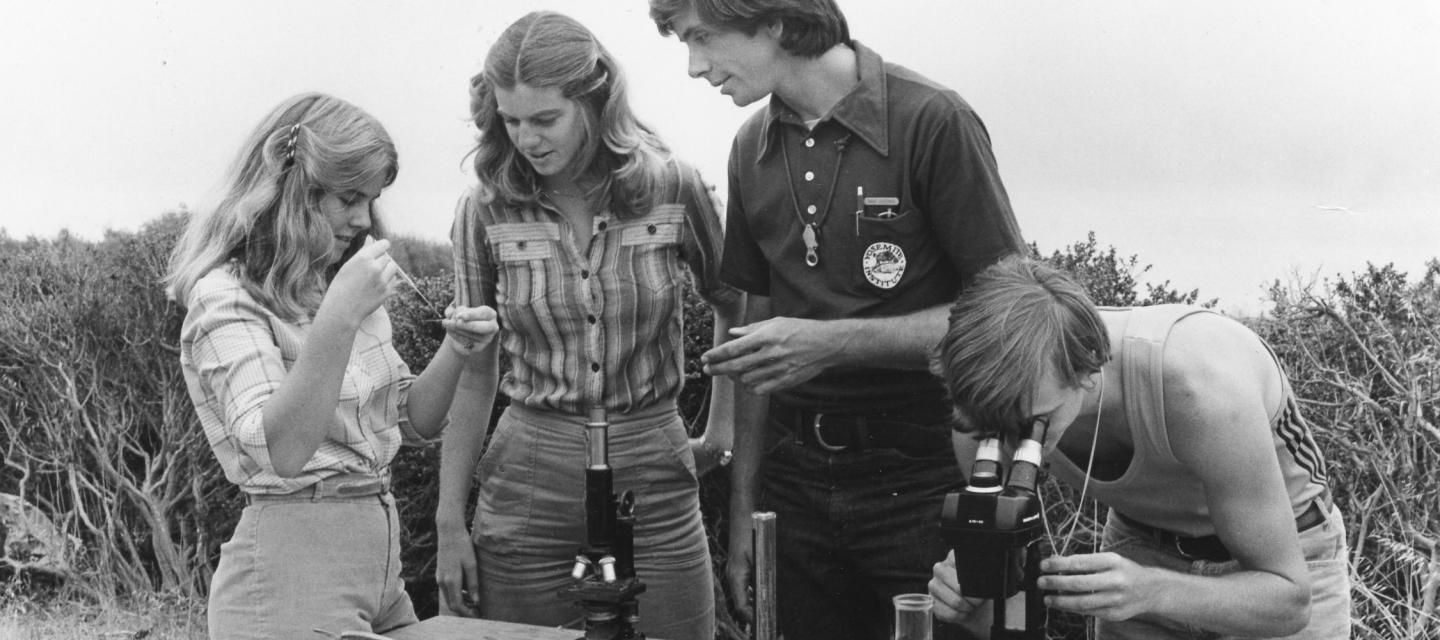
About Us
In 1971, a high school teacher named Don Rees assembled a group of 50 high school students in Yosemite for a week-long adventure. That trip inspired the founding of NatureBridge, formerly Yosemite Institute, and five decades of overnight environmental education in our national parks.
Today, NatureBridge connects over 30,000 students and 700 schools each year to the wonder and science of the natural world, igniting self-discovery and inspiring stewardship of our planet. We operate in Yosemite National Park and the Golden Gate National Recreation Area in California, Olympic National Park in Washington, and Prince William Forest Park in Virginia.
As the largest education partner of the National Park Service, we are proud to support their mission to preserve unimpaired the natural and cultural resources and values of the National Park System for the enjoyment, education and inspiration of this and future generations.
Through the Decades
Today
For over 50 years, learning has come alive at NatureBridge. Our overnight, environmental science programs take youth out of the classroom and into national parks. Each of our locations gives students the opportunity to apply environmental science in a real-world settings while strengthening ties with one another and to nature. Scroll over our locations on the map to learn more.
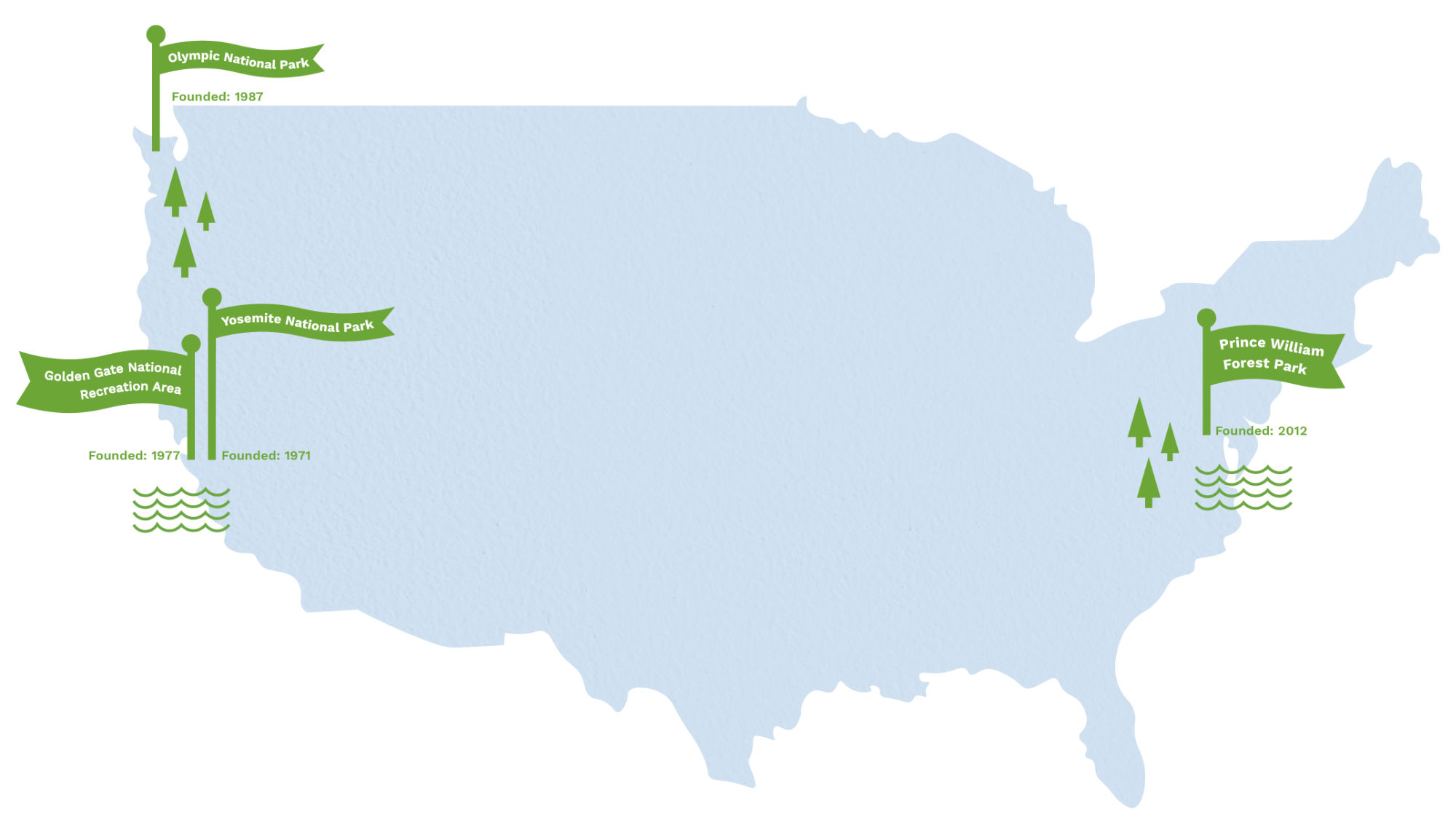
Olympic National Park
Founded 1987
Boasting three distinct ecosystems—alpine ridges, temperate rainforest and rugged coastline—Olympic National Park is a NatureBridge classroom filled with opportunity for exploration and discovery.
Each year on the shore of the glacially-carved Lake Crescent, over 4,000 students learn from and connect with Olympic’s awe-inspiring landscape.
NatureBridge acknowledges that our programs take place in the ancestral homelands of Tribes, Bands and First Nations. For Olympic, that includes the Klallam/S'Klallam, Makah, Quinault, Quileute, Skokomish, Hoh and the Queets tribes.
Yosemite National Park
Founded 1971
In the heart of California’s Sierra Nevada mountain range, Yosemite National Park is home to the flagship campus of NatureBridge, originally known as the Yosemite Institute.
Every year nearly 12,000 students witness Yosemite's iconic views—towering granite domes, stunning mountain ridges and gushing waterfalls. Our multiple teaching sites allow for unparalleled access for students.
NatureBridge acknowledges that our programs take place in the ancestral homelands of Tribes, Bands and First Nations. For Yosemite, that includes the Mono Lake Kutzadikaa Tribe, Bishop Paiute Tribe, Southern Sierra Miwuk Nation, Picayune Rancheria of Chukchansi Indians, Bridgeport Indian Colony, North Fork Rancheria of Mono Indians of California and the Tuolumne Band of Me-Wuk Indians.
Golden Gate National Recreation Area
Founded 1977
Just north of the Golden Gate Bridge in the Golden Gate National Recreation Area sits modern day Marin Headlands.
Each year over 10,000 students explore Rodeo Beach and the trails of the Headlands, challenge themselves physically, build meaningful relationships, and discover a caring relationship with the natural world.
NatureBridge acknowledges that our programs take place in the ancestral homelands of Tribes, Bands and First Nations. For Golden Gate, that includes the Coast Miwok, Graton Rancheria and Ohlone people.
Prince William Forest Park
Founded 2012
Prince William Forest Park is the largest green space in the Washington, D.C. metropolitan area.
NatureBridge provides nearly 2,000 D.C. youth the opportunity to discover the wonder of the natural world, just 35 miles from the city.
NatureBridge acknowledges that our programs take place in the ancestral homelands of Tribes, Bands and First Nations. For Prince William, that includes the Doeg/Monacan, Patawomeck and the Piscataway.
Learn more about our locations and history
From opening campuses across the country to launching our first Diversity Initiative to breaking ground on the National Environmental Science Center, NatureBridge has been hard at work for 50 years.
Download Our InfographicClassroom
Core Values
We bring our best self.
We express excellence and creativity in all that we do and we trust that our colleagues are bringing their best, too.
We learn, teach and grow.
Our most effective teaching comes from our desire to discover what we have not yet seen and for each of us to develop our own capacity to do what we are here to do.
We are inclusive.
We create an equitable, welcoming and empowering learning and working environment for all people.
We build open and honest relationships.
We communicate care for each other, seek collaborative solutions and address issues that might otherwise inhibit the atmosphere and effectiveness of our work together.
We inspire awe in the beauty of life.
Through the splendor of the natural world, we create “wow” moments that evoke joy, openness and connection.
We practice environmental stewardship.
We exemplify sustainable behavior by minimizing negative footprint and maximizing positive benefit in what we use, discard and the activities we do.
We are accountable.
By making clear agreements and setting attainable goals, we rely on our colleagues to do what they say they will do or speak up if an agreement or goal needs to be changed.
